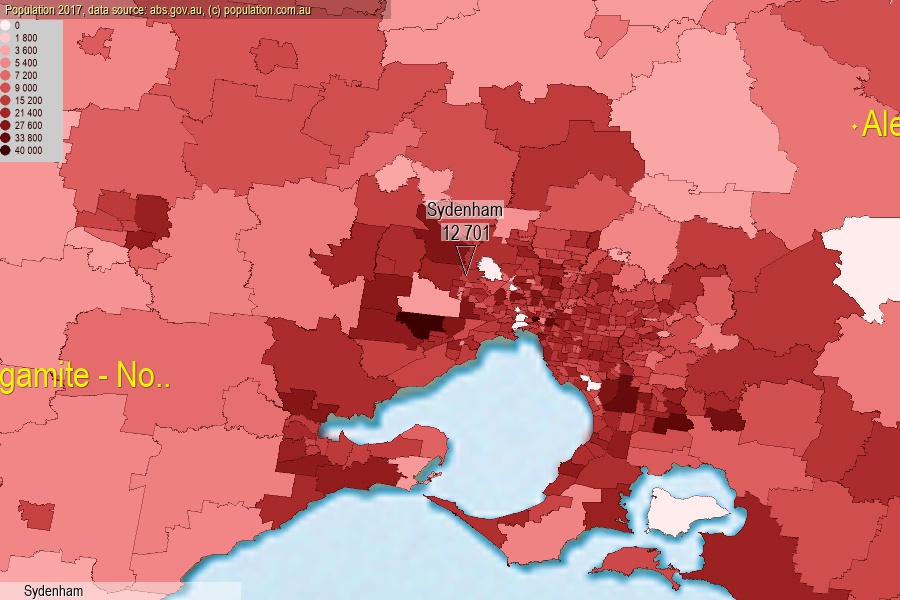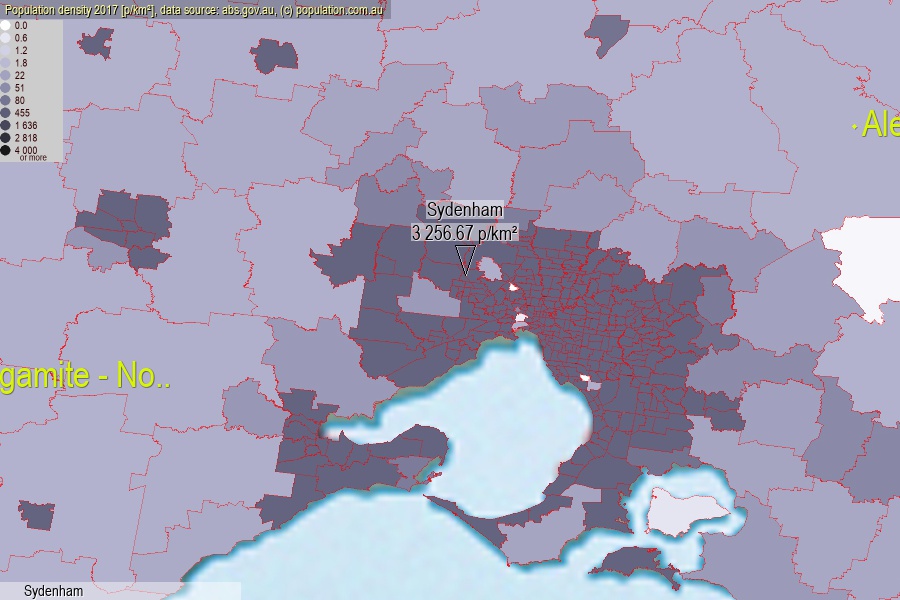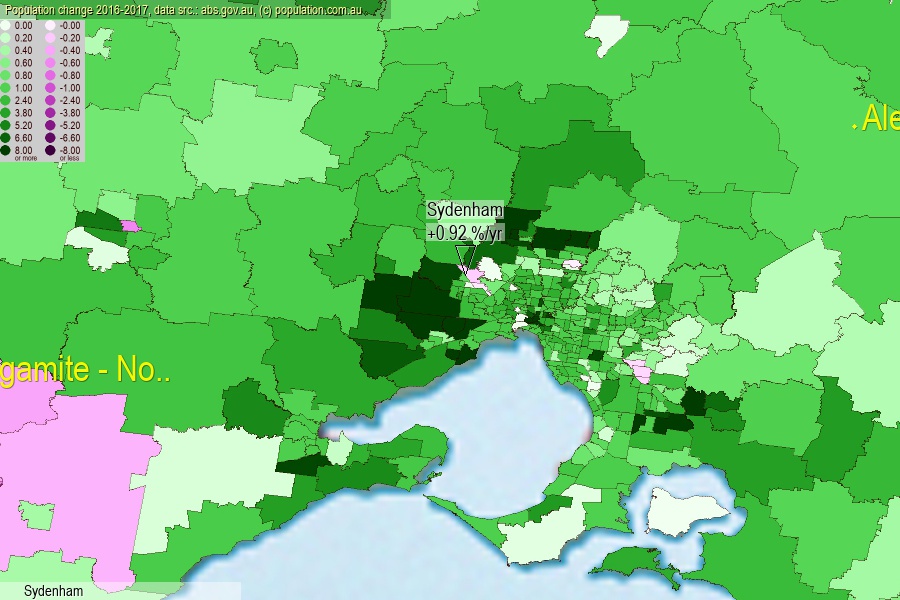 population.com.au
population.com.auLast official estimated population of Sydenham (as Statistical Area Level 2) was 12 701 people (on 2017-06-30)[2]. This was 0.05% of total Australian population and 0.198% of VIC population. Area of Sydenham is 3.90 km², in this year population density was 3 256.67 p/km² . If population growth rate would be same as in period 2016-2017 (+0.92%/yr), Sydenham population in 2025 would be 13 668. [0]



Click to enlarge. Sydenham is located in the center of the images.
Population [people], population density [p./km²] and population change [%/year] [2]
View borders » (new window) [4]
[1991-1992] +26.84 %/Yr.
[1992-1993] +37.14 %/Yr.
[1993-1994] +25.32 %/Yr.
[1994-1995] +32.76 %/Yr.
[1995-1996] +32.65 %/Yr.
[1996-1997] +26.92 %/Yr.
[1997-1998] +22.42 %/Yr.
[1998-1999] +16.19 %/Yr.
[1999-2000] +14.30 %/Yr.
[2000-2001] +8.94 %/Yr.
[2001-2002] +6.10 %/Yr.
[2002-2003] +2.11 %/Yr.
[2003-2004] +2.33 %/Yr.
[2004-2005] +1.43 %/Yr.
[2005-2006] +1.14 %/Yr.
[2006-2007] +2.09 %/Yr.
[2007-2008] +1.33 %/Yr.
[2008-2009] +1.53 %/Yr.
[2009-2010] +1.48 %/Yr.
[2010-2011] +1.12 %/Yr.
[2011-2012] +0.83 %/Yr.
[2012-2013] +0.79 %/Yr.
[2013-2014] +0.66 %/Yr.
[2014-2015] +0.79 %/Yr.
[2015-2016] +1.23 %/Yr.
[2016-2017] +0.92 %/Yr.
[0] Calculated with linear interpolation from officially estimated population
[1] Read more about SA2 and Australian Statistical Geography Standard (ASGS) on abs.gov.au
[2] Population data from Australian Bureau of Statistics (Population and density: 2017; change: 2016-2017)
[3] Digital Boundaries: Australian Statistical Geography Standard (ASGS) 2016.
[4] Border coordinates are simplifyed using Ramer-Douglas-Peucker algorithm.